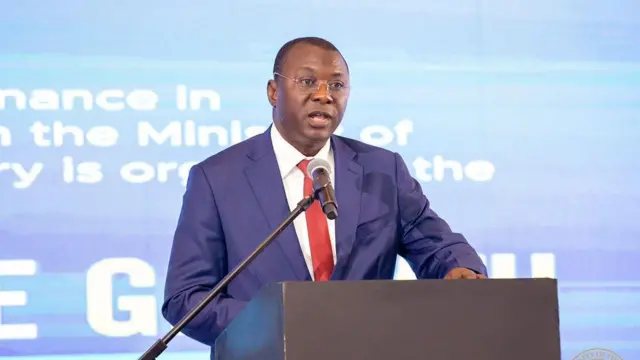Ghana finance ministry signals reform ahead of 2026 budget
Ghana is engaging stakeholders ahead of its 2026 budget as it grapples with ~70% public debt and ~2.5% growth. Markets will watch revenue/GDP targets and new issuance to assess if sovereign spreads (currently ~420bps) can be compressed.

Ghana’s finance ministry is currently intensifying stakeholder consultations ahead of the fiscal year 2026 budget, signaling a methodical policy attempt to broaden revenue mobilization and fundamentally reform expenditure frameworks. This outreach campaign is critical given the country’s ongoing debt-sustainability challenge, marked by public debt still hovering near ~70% of GDP and sluggish real growth near ~2.5% for 2025.
The government faces the acute dual pressure of maintaining necessary social spending while servicing an average interest cost near ~9% on domestic debt, which crowds out vital capital expenditure.
The core mechanism at work involves boosting institutional and market credibility. By engaging extensively with the private sector, civil society, and development partners before the budget delivery, the government signals a robust commitment to implementing necessary IMF-style revenue reforms.
These include tangible measures such as a comprehensive VAT base expansion, modernizing digital tax administration to capture the informal sector, and tackling entrenched governance issues around state-owned enterprises (SOEs). For investors, this proactive stance is crucial as it improves the perceived probability of avoiding a disruptive fiscal event, which is essential given Ghana’s currently wide Eurobond spreads of ~420 basis points (bps) over US Treasuries.
From a macro viewpoint, if these consultation-driven reforms are effective and backed by strict implementation, the country could realistically drive its persistent low revenue-to-GDP ratio (currently ~12%) up to ~14% over the next two years.
This is essential for achieving fiscal consolidation targets, which aim to narrow the deficit from the current ~5% to a more sustainable ~3.5% of GDP by FY2026, thereby stabilizing the debt-to-GDP ratio over the medium term. For the domestic banking and financial sectors, clearer budgeting and reduced sovereign reliance could significantly reduce rollover risk, potentially leading to local bond yields compressing by 30–40 bps.
However, the risks to this process remain significant and multi-layered. They include potential implementation failure, continued weakness in the tax base due to evasion or exemptions, and unexpected external shocks like commodity price drops in gold or cocoa.
Furthermore, political instability or failure to impose discipline on loss-making SOEs would quickly erode any fiscal gains. These structural issues require deep reforms, such as the full ring-fencing of SOEs and the rationalization of expensive tax exemptions, as advocated by development partners.
Investigationally, investor focus should pivot sharply to the budget delivery in early 2026. Key questions revolve around whether the revenue estimates are realistic, whether they match or exceed IMF-mandated targets, and crucially, whether the government is able to issue new local-currency debt instruments without premium jumps.
For forward movement into Q4 2026, the tangible target would be lowering the 10-year Ghanaian sovereign yield to <10% and tightening the sovereign Eurobond spreads to <380 bps. These metrics will serve as the final test of the government's credibility and its ability to secure long-term debt sustainability.





